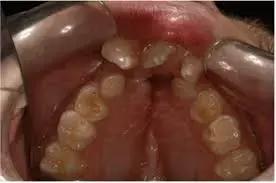Study on Molar-Incisor Hypomineralisation in Individuals with Cleft Lip and Palate
Individuals born with cleft lip and palate have a higher frequency of molar-incisor hypomineralisation, suggests a study published in the Orthodontics & Craniofacial Research.
Study Aim
This study aimed to investigate the frequency of molar-incisor hypomineralization (MIH) in individuals born with cleft lip and/or cleft palate. Three hundred eighty-six individuals born with cleft lip and/or palate were examined before orthodontic treatment. All the individuals underwent a clinical examination and intraoral standardized photos. The registration of MIH was conducted by two orthodontists and analyzed in association with the cleft type and laterality. The Kruskal–Wallis test and the regression test were used to compare the frequency of molars and incisors affected according to cleft type and laterality, sex, and age.
Results
They found a frequency of 67.87% of MIH in the studied sample. The frequency varied from 25% (in individuals born with cleft palate) to 77% in individuals born with bilateral cleft lip and palate.
Statistical Analysis
- The number of affected molars was statistically different depending on cleft type and laterality (P < .001 - Kruskal–Wallis test).
- Differences were found between:
- Individuals born with unilateral cleft lip and palate and unilateral cleft lip and alveolus (P = .03).
- Individuals with isolated cleft palate (P = .03).
- Individuals born with bilateral cleft lip and palate and born with unilateral cleft lip and alveolus (P = .01).
- Individuals with cleft palate (P = .01).
- Sex (P = .21) and age (P = .36) had no influence on the frequency of MIH.
- A positive correlation was found between the number of molars affected and incisors affected (P < .001).
Individuals born with cleft lip and palate have a higher frequency of MIH, and the complexity of cleft type was associated with the number of affected molars.
Reference
Wanderley Lacerda RH, Filgueiras VM, Guedes Mendonça AC, Vieira AR. Molar-incisor hypomineralization in a cohort of individuals born with cleft lip and palate. Orthod Craniofac Res. 2024; 27(Suppl. 1): 21-26. doi:10.1111/ocr.12708



0 Comments
Post a comment
No comments yet. Be the first to comment!